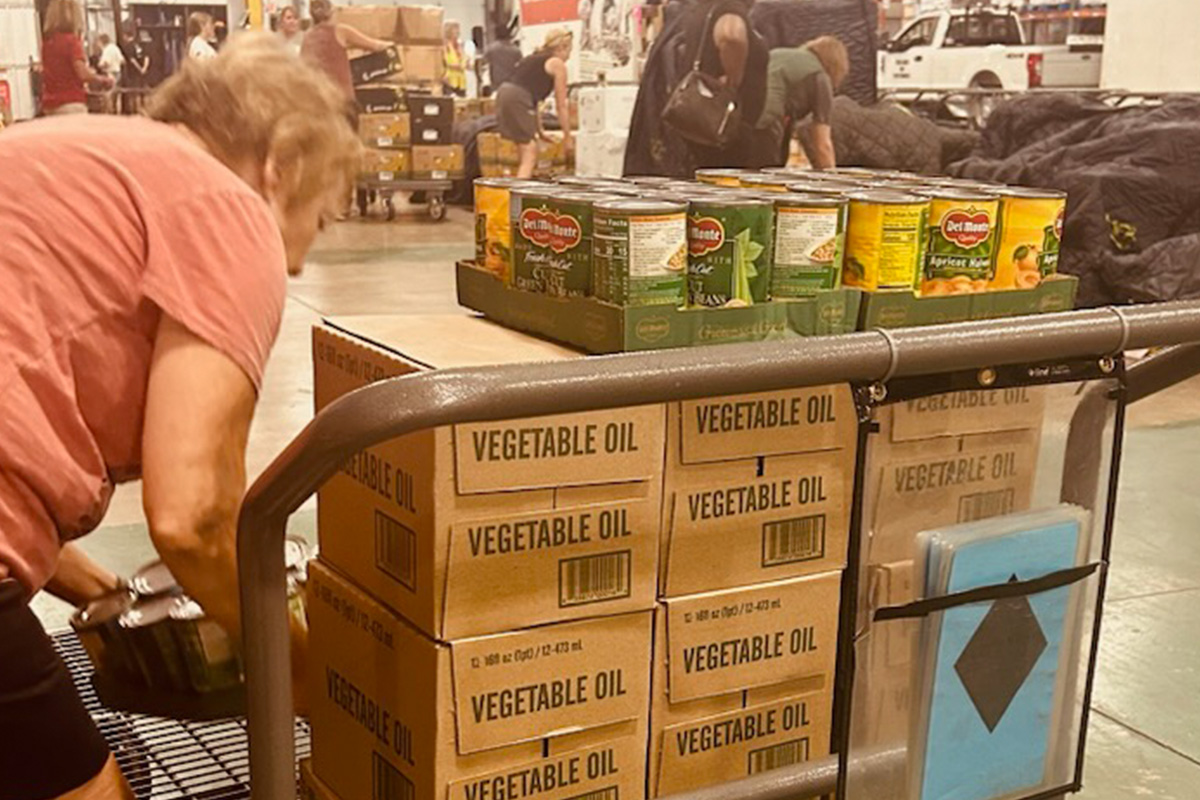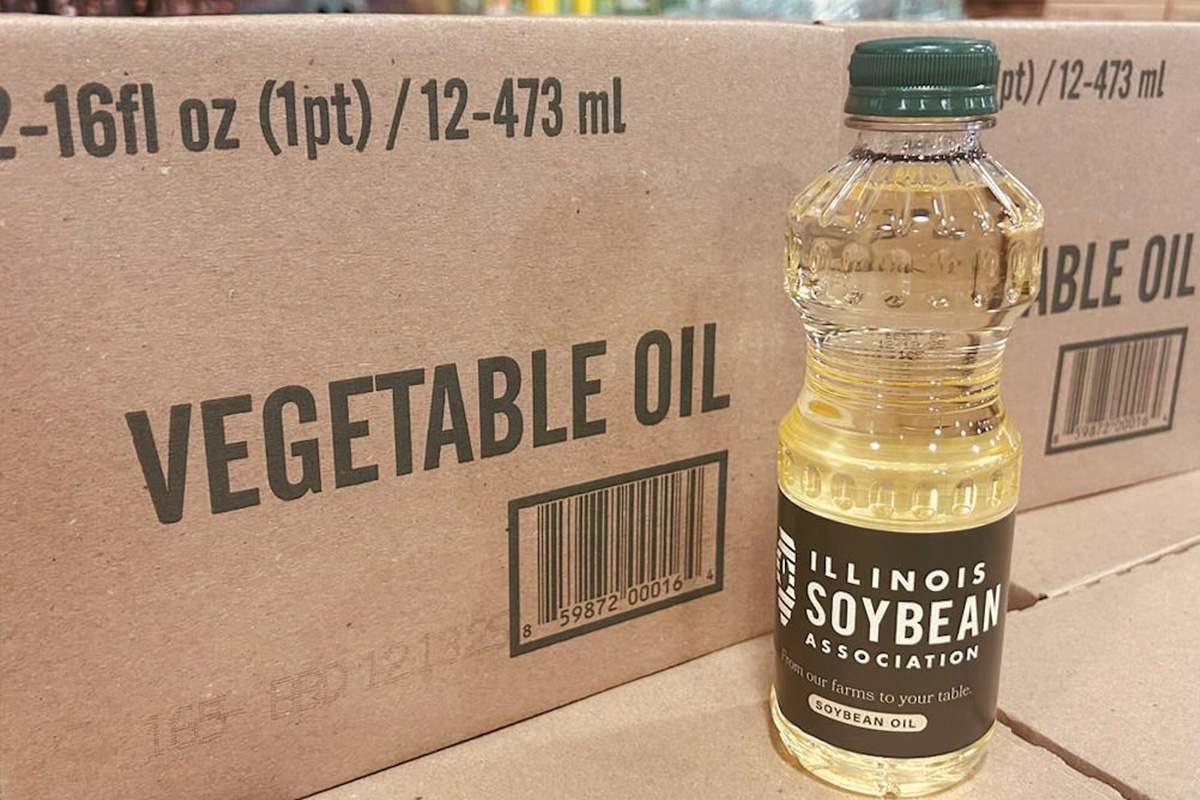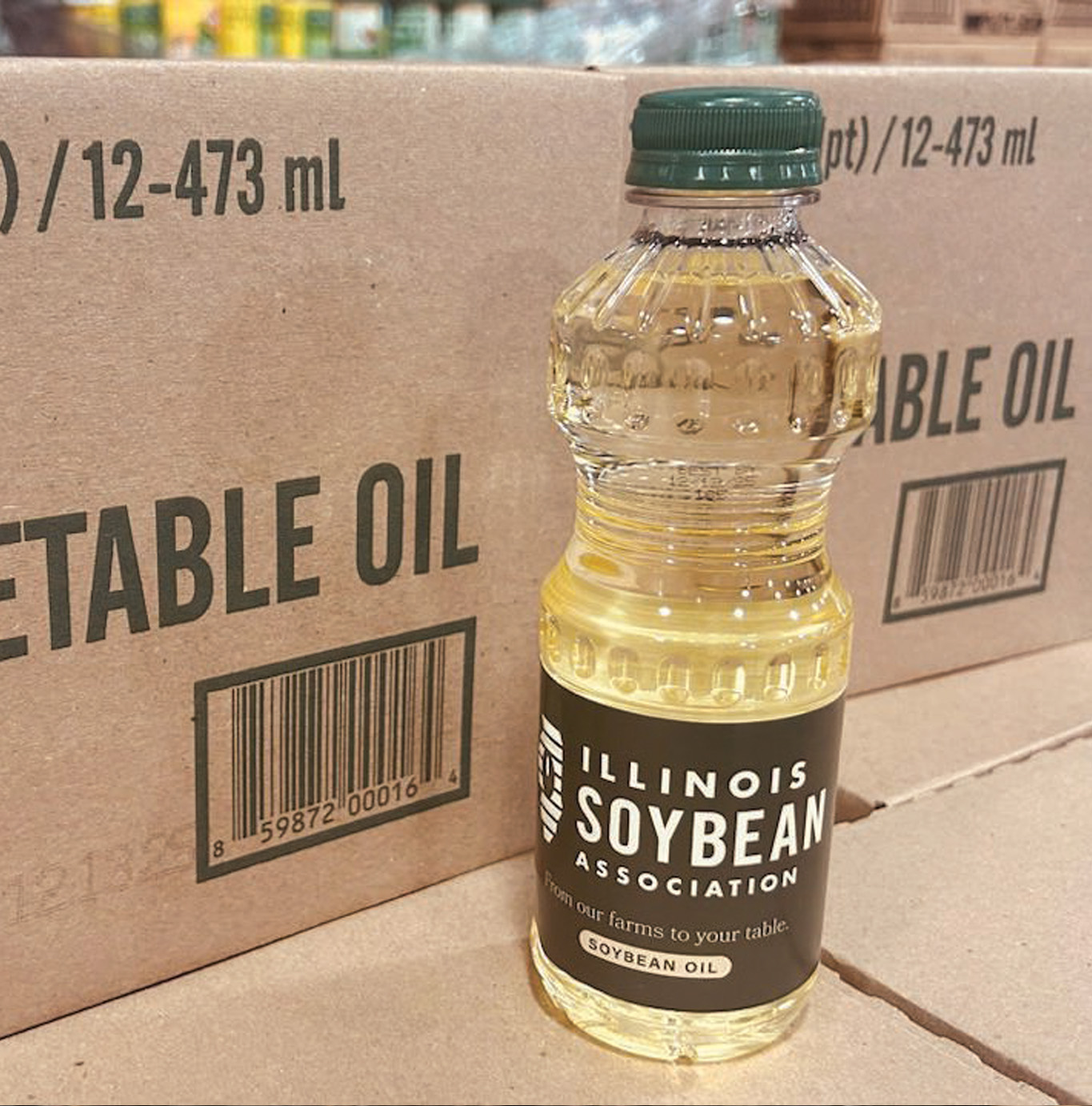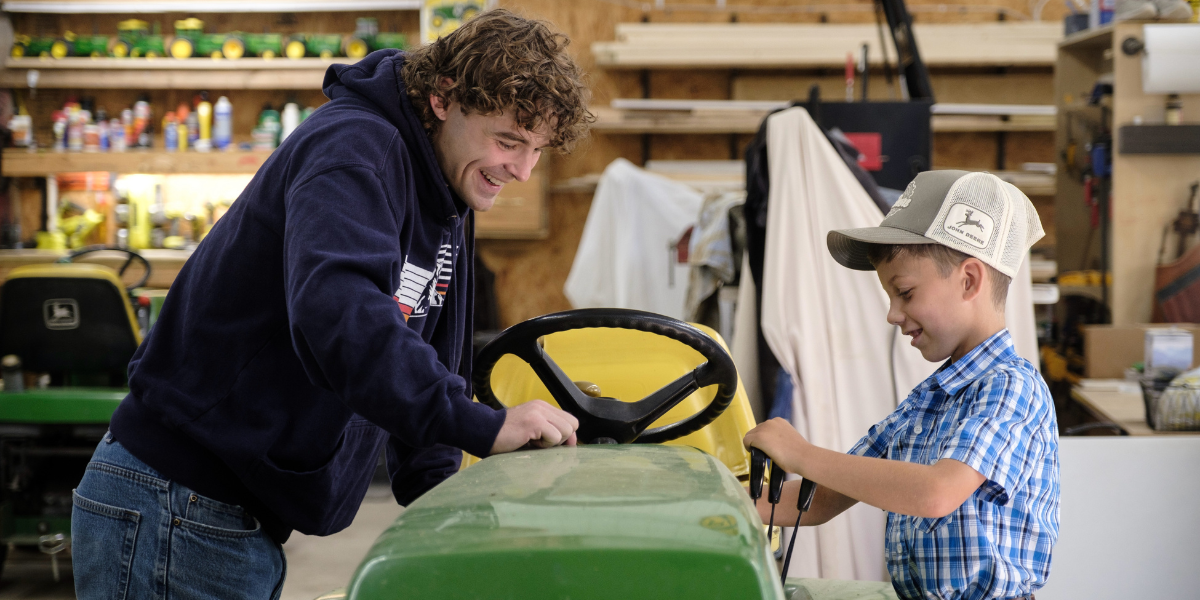Farmers work hard to grow healthy, sustainable soybeans that feed the world. But there is still a huge gap between the field and the people who need access to staple products such as soybean oil.
Recently, your Illinois soy checkoff was pleased to play a small part in closing that gap. It donated seven pallets of soybean oil worth nearly $12,000 to Midwest Food Bank.
The Illinois Soybean Association (ISA) believes soy can play a critical role in ensuring that none of our neighbors, friends or family go hungry, and this is just the start.
“There is a story to tell with every bean Illinois farmers plant, and it’s that growers for generations have produced food to feed our families in their home kitchens and around the dinner table,” says Andrew Larson, Director of Government Relations & Strategy.
How big is the need?
Food insecurity isn’t just a global issue—it’s happening around us every day.
In Illinois, 1.5 million people face hunger—and of them, 426,600 are children. That means one in eight people, and one in six children, in our state are affected.
This situation isn’t just limited to people in poverty. Food insecurity can happen to anyone, such as when the family’s main provider becomes ill or hurt and is unable to work.
Midwest Food Bank’s ties to agriculture start from their beginning. It is a faith-based organization farmer-founded and farmer-run to this day. “I see the impact from two sides: from a food bank side and from growing up and operating a family farm raising soybeans,” says CEO Eric Hodel, who also runs his family’s Metamora operation, Quarter Mile Farms, raising soybeans, corn and sheep.
In fact, Midwest Food Bank’s first location was a converted barn on its founder’s farm. Today, with three locations in Illinois plus facilities in seven more states and two countries, the organization remains headquartered in Normal.
“We serve approximately 600 food pantries across the state of Illinois,” Hodel says. “And that soybean oil reaches all of them.” The Normal location alone distributes food to 132,000 neighbors in need throughout Central and Southern Illinois.
The gift of soybean oil fills a critical and high-demand need, Hodel explains. “You’re providing support from both a food and cooking perspective,” he says, “not only with the quantity but the fact that it’s the family size soybean oil. That’s something our agencies are always asking for.”
In fact, soy can play a vital role in feeding those in need, something both Hodel and ISA recognize and pursue.

Photo credit: Midwest Food Bank

Photo credit: Midwest Food Bank
How Does Soy Fit In?
As a farmer, you know you’re feeding the world. But did you also know the soy you grow can play a significant part in feeding the hungry and keeping them healthy? Here’s how:
- Soy is rich in protein.
- Soy contains all nine amino acids the human body needs.
- Soy protein is the only plant protein comparable to animal protein.
- Soybean oil is a great choice for many cooking and baking applications with its neutral flavor and heart health benefits.
Added to that:
- The U.S. Food and Drug Administration has recognized soybean oil for its cardiovascular health benefits with a qualified health claim. The soybean oil health claim states: Supportive but not conclusive scientific evidence suggests that eating about 11⁄2 tablespoons (20.5 grams) daily of soybean oil, which contains unsaturated fat, may reduce the risk of coronary heart disease.
- Replacement of saturated fat with unsaturated fat, like that found in soybean oil, improves circulating lipids and lipoprotein levels, the main targets for cardiovascular disease prevention and management.
And on top of that, says Hodel, “Cooking oil is a highly sought-after product by our agencies,” making ISA’s contribution a very valuable, and very welcome, surprise.
“Soybeans are so versatile, and there are so many products that are an outcrop of them,” he says. “The ability of soybeans to feed and fuel the world is amazing.”
To Hodel, the connection between ISA and Midwest Food Bank is a natural one. “The impact across the state that we can make from that one connection is huge—that can impact thousands of lives,” he says. “I’m excited to see the future impact ahead from our two organizations collaborating.”
How can you help?
Fortunately, there is an opportunity for anyone to get involved, including farmers, their families and others.
“At the grower-farmer level, you can get involved by volunteering,” says Hodel. “You can also donate at your local food pantry. Field & Bean readers are a lot closer to connect in person if they want to.”
Both the Midwest Food Bank and their food pantry agencies rely on volunteers to keep serving their communities. In fact, at Midwest Food Bank, in 2022 alone, more than 30,000 volunteers put in over 350,000 hours of service, the equivalent of over 175 full-time employees.
What is the difference between Midwest Food Bank and food pantries? A food bank is the distribution facility for millions of pounds of food and other products that go out to the community. Food pantries function as the arms of the organization that reach communities directly.
To find a location to volunteer near you, visit https://midwestfoodbank.org/.
Recent Articles
TikTok sensation Jackson Laux, age 9, partners with John Deere to inspire agriculture's future.
By IL Field & Bean Team

